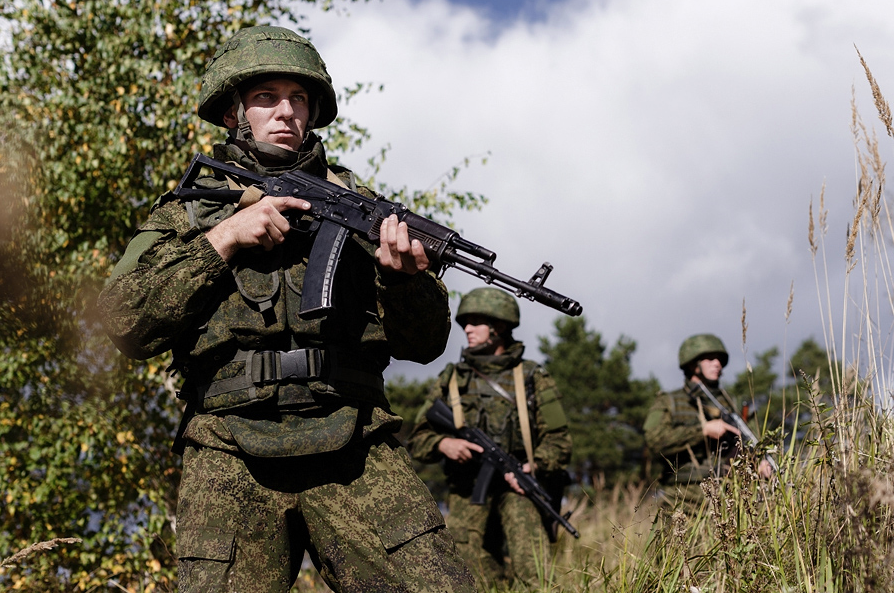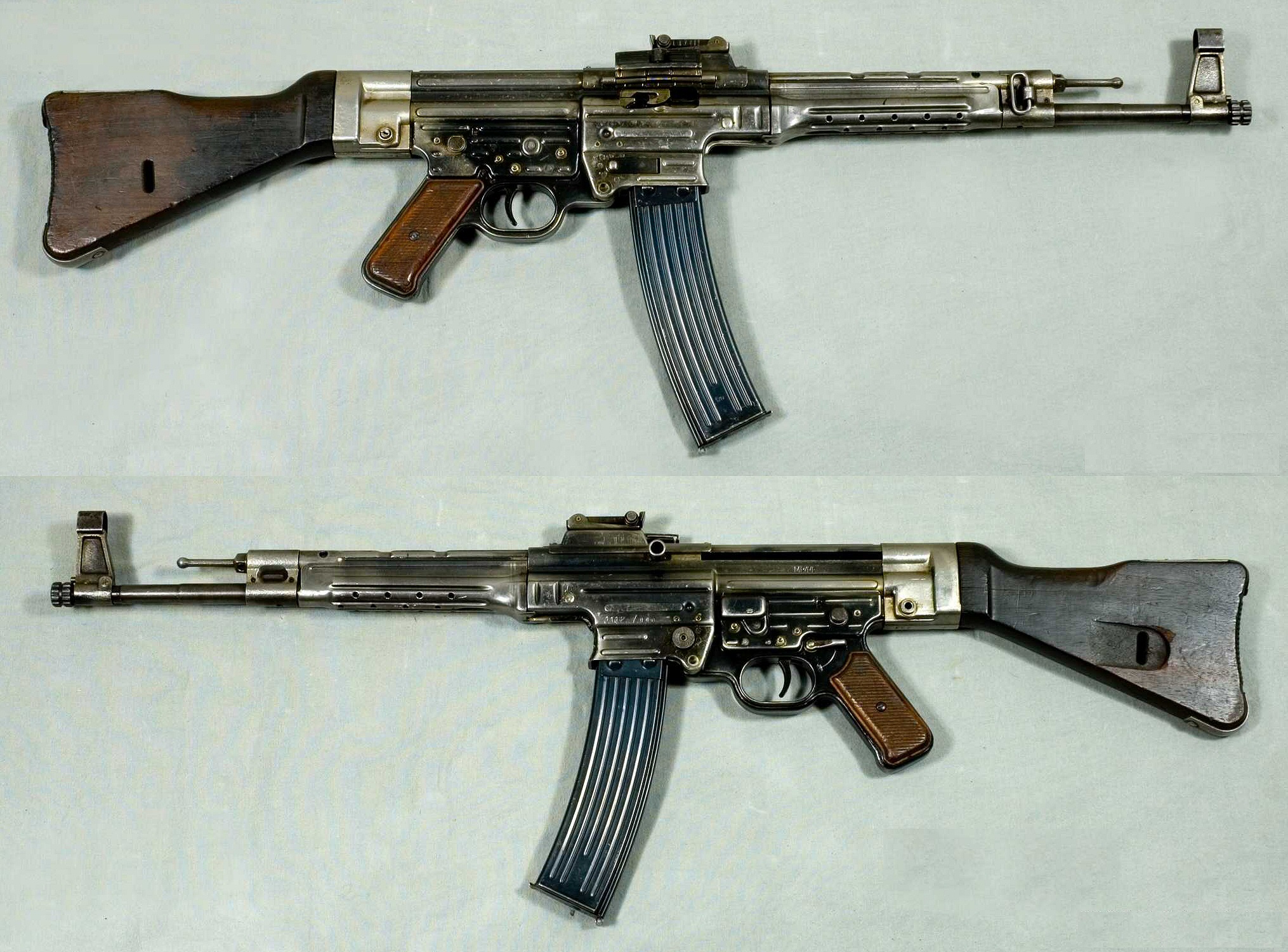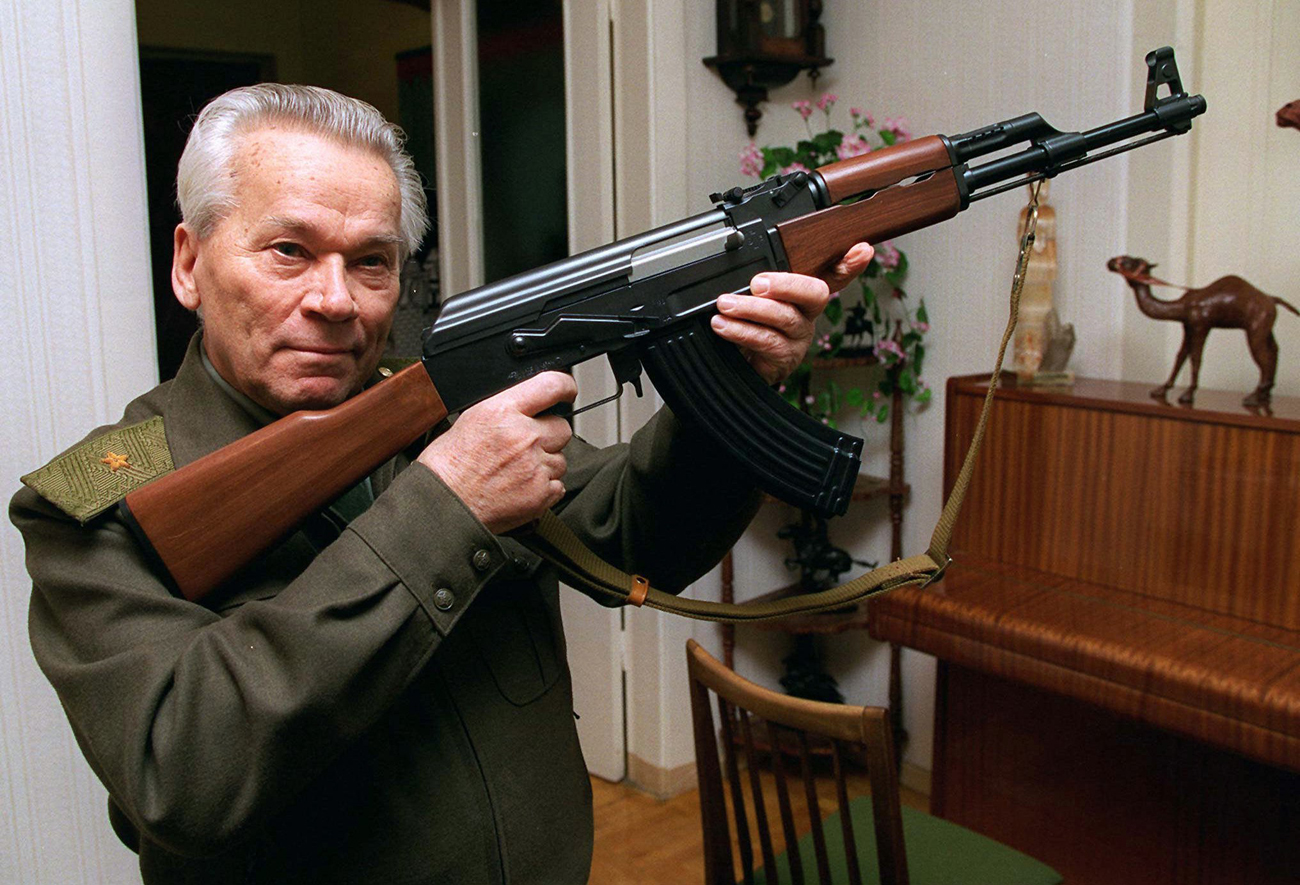
The Kalashnikov rifle needs no introduction.
mil.ruA popular view among people is that the model on which the Kalashnikov assault rifle was based was the German G-44 assault rifle (Sturmgewehr). However, this is not quite true. The issue of designing a series of small arms (assault rifle, carbine, submachine gun) using an intermediate cartridge was first raised in the Soviet Union as early as July 1943, after capturing a sample trophy of the German carbine Mkb-42(H).
Soviet designers were assigned the task of creating automatic weapons using the 1943 model intermediate cartridge. The winner in the competition held in 1944 was the Sudayev assault rifle (AS-44). From the feedback and suggestions a decision was taken to refine and adopt Sudayev’s assault rifle.
 MP44 (Sturmgewehr 44). From the collections of Armémuseum (Swedish Army Museum), Stockholm. / Public domain
MP44 (Sturmgewehr 44). From the collections of Armémuseum (Swedish Army Museum), Stockholm. / Public domain
Sudayev suddenly died at the age of 34 in 1946 and, unfortunately, as it turned out, no one was available to finish this work. The question of designing an assault rifle was left open. A new contest was soon announced in which the technical specifications were primarily based on the features of the weapon Sudayev created, rather than on the German Sturmgewehr (Stg-44). The German Sturmgewehr was, however, used in comparative firing tests. After a series of complex and lengthy competitive contests, a decision was taken to go with the 7.62-mm Kalashnikov assault rifle (AK) or AK-47.
The belief is that the Kalashnikov assault rifle appeared in the army in 1947. However, it usually takes a long time to pass from the adoption of a model to the beginning of mass production and its actual introduction into the armed forces. This is the story of the PPSh-41, SKS-45 and many other models of small arms.
 Mikhail Kalashnikov shows a model of his world-famous AK-47 assault rifle. / AP
Mikhail Kalashnikov shows a model of his world-famous AK-47 assault rifle. / AP
The Kalashnikov was no exception. Despite its designation as “Kalashnikov assault rifle, 1947 model”, it went into mass production and accordingly, was introduced into the armed forces only in 1949.
The AK-47 was first used in combat in the operation codenamed ‘Vikhr’ (Whirlwind) in Hungary in October 1956, while the general public saw the Kalashnikov for the first time a year earlier, in the Soviet comedy Maxim Perepelitsa.
While speaking about the merits of the Kalashnikov assault rifle, people often mention the simplicity and reliability of this weapon – and this is true, but this took a long time to achieve. The actual and final model was adopted only in 1959, as the Kalashnikov AKM, the “M” standing for modernized.
The problem lay in the fact that the AK-47 was extremely difficult and expensive to produce, as from the stamping process they had to go back to more complex manufacturing, milling the firearm frame (receiver).
The production of this assault rifle became intermittent, and the shortage of small arms in the army was made up by using the Simonov carbine. It became necessary to simplify the manufacturing of the Kalashnikov assault rifle, for which new varieties of steel and production technologies were used.
A number of changes were made. The weight of the assault rifle was reduced by 600 grams, a knife bayonet was introduced for the first time, repacking the standard bayonet. One of the main advantages, in comparison with the AK-47, was the highly technological and relatively low cost production process of the weapon.
Fedor Tokarev, the well-known Soviet designer and creator of the TT pistol and SVT-40 semi-automatic rifle, gave the following description of the AKM: “This model is reliable in operation, ensures high accuracy and precision shooting, and is relatively light.”
The AKM was produced between the years 1960 and 1976, and likely became the most mass produced model of the Kalashnikov assault rifle in the Soviet Army. To this day, the AKM remains in service with airborne troops, as a silent weapon (with an installed silencer, the installation of which was problematic on the AK-74).
Were there examples of small arms in other countries like the Kalashnikov, but were not copies of the original?
Such a model was built in post-war Czechoslovakia.
Countries of the Warsaw Pact occasionally used weapons designed not only in the USSR, but models that they themselves created. Czechoslovakia, which had a rich tradition of designing and producing small arms, was no exception. In 1958, the Czechoslovak Army adopted the assault rifle Čermak CZ SA Vz.58, which looks very similar to the Kalashnikov, but differs significantly in its design. This assault rifle is characterized by its high quality, although in terms of reliability, it is still inferior to the Kalashnikov.
 Members of Active Reserve of the Armed Forces of the Czech Republic armed with vz.58 / Public domain
Members of Active Reserve of the Armed Forces of the Czech Republic armed with vz.58 / Public domain
It is often said that AKS-74U, with its shorter half-barrel and collapsible stock, was intended for airborne troops. This is not true. This model was initially designed for combat vehicle crews, artillery and communications units – or those soldiers who, because of the specificity of their tasks, did not have to spend a long time on the front firing lines.
However, to test this new compact model assault rifle in a combat situation, the AKS-74U was sent to assault troops fighting in Afghanistan in 1982-83. All the unflattering and unpleasant nicknames given to this model are connected with the attempt to use this assault rifle to soldiers in units engaged in intense fighting.
The major disadvantages of this truncated model – low accuracy of fire, shorter sighting range and quick overheating of the barrel—were soon unveiled here. After the Soviet troops withdrew from Afghanistan in 1989, the AKS-74U was withdrawn from service, sent for storage to warehouses and, later, because of the increased violence and aggravated criminal situation in the country, was issued to Interior Ministry personnel, where it is still being used.
 A Ukrainian Marine armed with an AKS-74U. / Public domain
A Ukrainian Marine armed with an AKS-74U. / Public domain
This was the only version of the Kalashnikov assault rifle that was manufactured in Tula, while the other models were built in Izhevsk.
First published in Russian by Russkaya Semyorka.
All rights reserved by Rossiyskaya Gazeta.
Subscribe
to our newsletter!
Get the week's best stories straight to your inbox